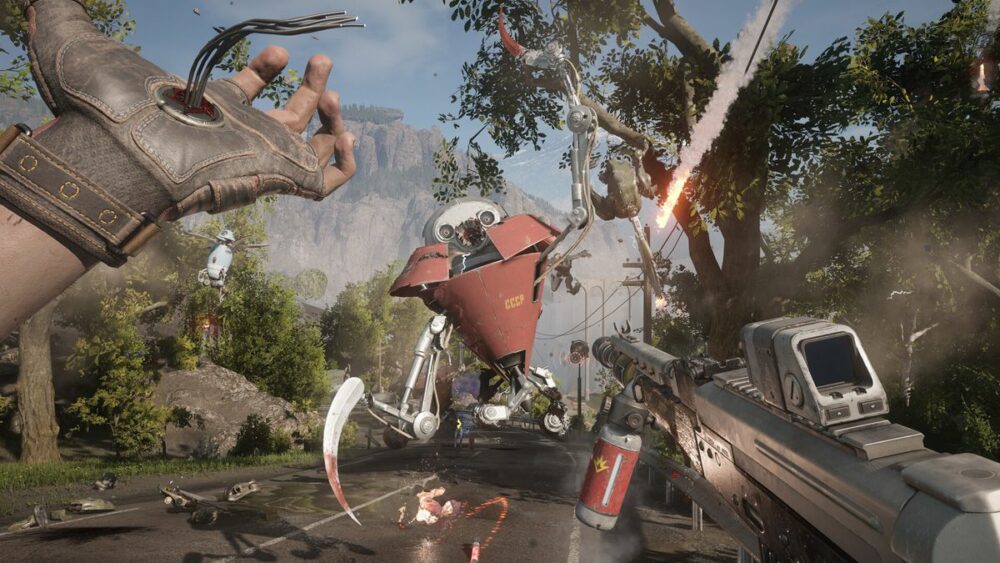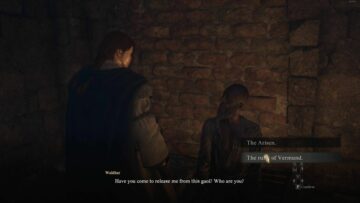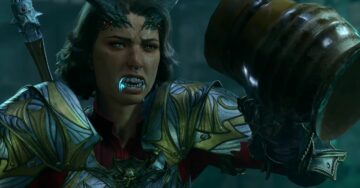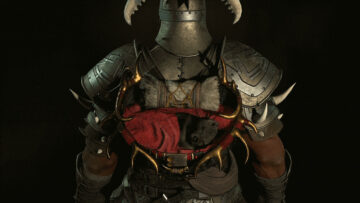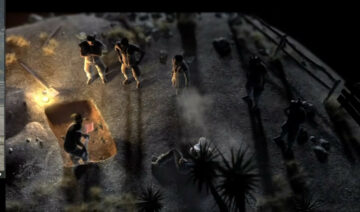Atomic Heart wears its BioShock influences on its sleeve. Both games place first-person adventure mechanics in elaborate utopias gone wrong. Both feature verbose, bombastic leaders dead set on making their grandiose dreams into reality; combat repertoires mix traditional weapons with in-game “magic” (instead of BioShock’s Plasmids or BioShock Infinite’s Vigors, we have Atomic Heart’s Polymers); a confused, amnesiac main character has mysterious ties to said leader, forming the narrative crux.
Yet, crucially, Atomic Heart fails to nail down what made the BioShock series — as divisive as it is — work: a keen laser-focus on a few central themes.
Instead of carefully weaving a textured dimension to its plot and gameplay, Atomic Heart developer Mundfish cast its net wide. And by embracing so much, it held onto very little. This lack of focus, whether intentional or not, on careful narrative threading in favor of paint bombs of set pieces results in a vague sketch of BioShock rather than a detailed reimagining. None of this is to mention the chum of its writing bloodying the waters of its world, or the incessant whining and unjustified antagonism of its unlikeable protagonist, all within a haphazard mess of levels that needed more editing, not more variety.
While my initial impressions of the game were (and remain) highly favorable, and I do recommend trying it on Game Pass — just not buying it — I cannot help but be underwhelmed by the consistency of the game’s inconsistencies. While the retro Soviet “aesthetic” is prominent, that bombastic, beautiful opening theme is abandoned in favor of occasional notes. It’s symphony more than solo.
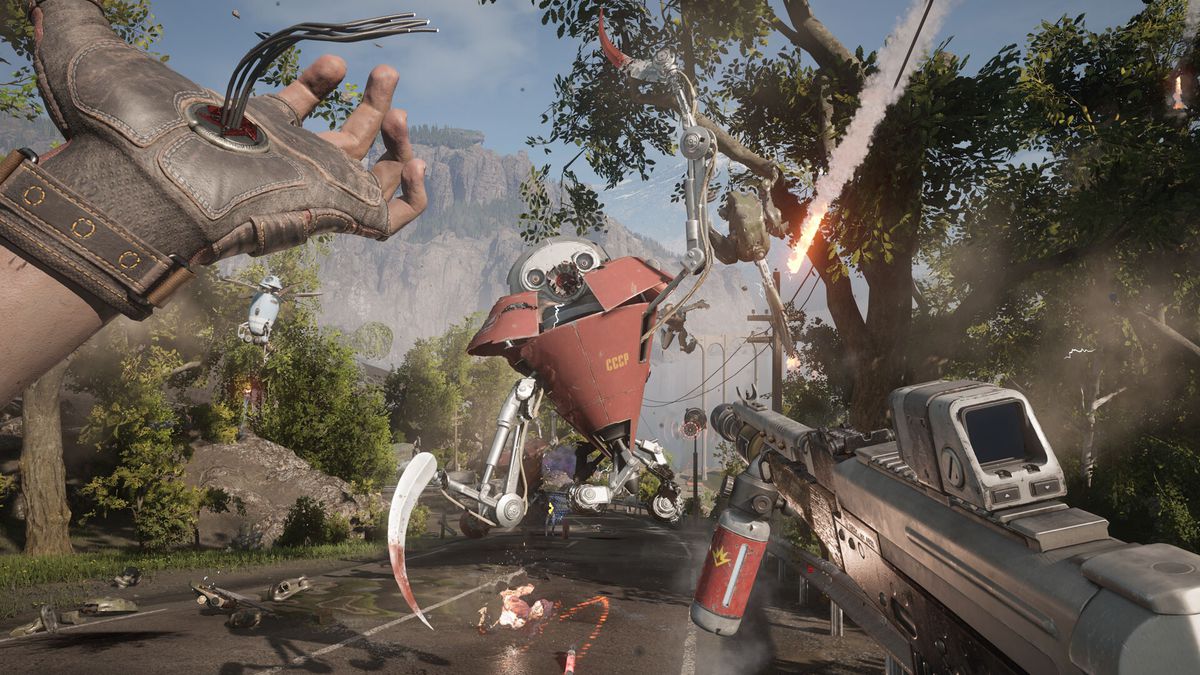
This disease of diversity seeps into the bones of gameplay too. While Atomic Heart’s approach is initially fun — it jumps from areas replete with plant zombies to spaces with hulking monsters — it quickly feels like the designers took the kitchen sink approach. There is no connection between these sections of the world, and as a result, the game feels more like a patchwork, rather than several strong ideas that are gradually iterated upon in each subsequent level.
Crucial parts of the game take place in underground facilities — interesting, initially haunting, beautiful corridors — but when Mundfish thrust me into Atomic Heart’s open world, I actually considered turning the game off.
In the game’s semi-open world, the murky depths of an empire’s fragmented failings are abandoned in favor of a garish pastoral environment. The space is wide open, and filled with security cameras and robots and machines that make more robots when alerted by said security cameras. Everything you spent hours learning is abandoned — Atomic Heart’s open world might as well be a completely different game. Filled with robots that are endlessly repaired and swarms of bullet-sponge enemies that are positioned at almost every corner, these open-world areas are some of the worst-designed spaces I’ve encountered.
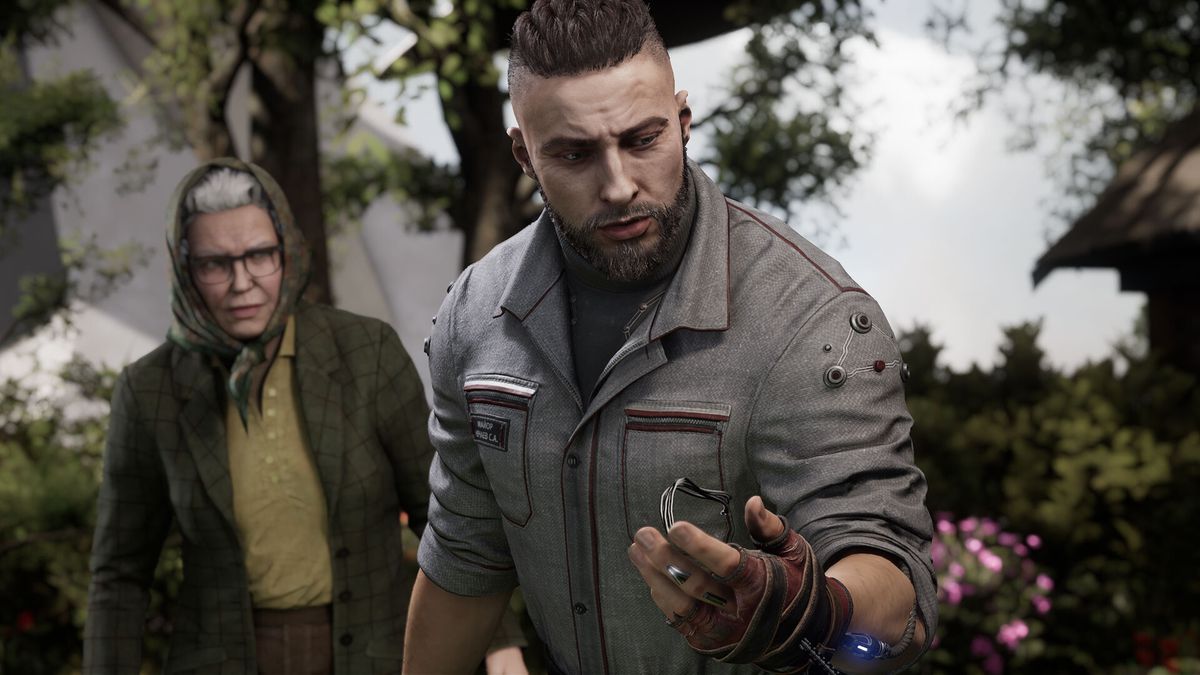
Aside from playing host to numerous useful crafting materials, I advise — if you insist on continuing — skipping the open world altogether. The game is stingy with ammo which you’re better off saving for corridor fights and boss battles.
After all, let me repeat: Atomic Heart’s open-world robots endlessly respawn. I cannot fathom this design choice or why it is so antagonistic to your presence. Even FromSoftware games, famous for their worlds’ antagonism toward players, semi-permanently kill enemies.
But the open-world design is illustrative of the wider point: The game is trying to do everything and therefore wins at almost nothing. BioShock had big beautiful spaces, but did not inject such design into gameplay — there was no need to diversify its focus, as it stuck to one theme and played it. Atomic Heart, in its attempt at complexity, spins a thousand plates and drops many. If the developers had hewed more closely to BioShock, it would have stuck to its underground facilities, playing carefully to its core theme. It would have made a sometimes enjoyable game into a memorable one.
- SEO Powered Content & PR Distribution. Get Amplified Today.
- Platoblockchain. Web3 Metaverse Intelligence. Knowledge Amplified. Access Here.
- Source: https://www.polygon.com/23614033/atomic-heart-bioshock-opinion
- Adventure
- All
- approach
- areas
- as
- Atomic Heart
- beautiful
- behind
- Better
- between
- BIG
- Blade
- bones
- Buying
- cameras
- carefully
- central
- choice
- closely
- combat
- complexity
- connection
- considered
- continuing
- Core
- corner
- could
- crafting
- dead
- depths
- Design
- designers
- detailed
- developers
- DID
- different
- Dimension
- Disease
- Diversify
- Diversity
- down
- dreams
- drops
- Elaborate
- embracing
- Endlessly
- Entertainment
- Environment
- equipped
- Every
- everything
- Facilities
- facing
- favor
- Feature
- fights
- filled
- Focus
- fragmented
- FromSoftware
- fun
- game
- gameplay
- Games
- Gaming
- hand
- heart
- help
- highly
- HOST
- hours
- HTTPS
- i
- in-game
- instead
- interesting
- IT
- lack
- leader
- leaders
- learning
- Level
- levels
- Little
- Machines
- make
- Making
- materials
- Mechanics
- might
- monsters
- more
- Mundfish
- narrative
- need
- net
- notes
- One
- open
- Open World
- opening
- paint
- place
- plato
- plato data intelligence
- platodata
- platogaming
- player
- players
- Playing
- Point
- Polygon
- positioned
- prominent
- protagonist
- quickly
- Reality
- recommend
- Repeat
- Respawn
- result
- Results
- Retro
- robot
- robots
- Said
- saving
- security
- Series
- set
- several
- So
- Solo
- Space
- spaces
- spins
- street
- strong
- subsequent
- such
- Take
- The
- The Game
- the world
- theme
- traditional
- turning
- variety
- View
- well
- What
- wide
- wider
- Wins
- within
- woman
- Work
- world
- writing
- zephyrnet
- Zombies
